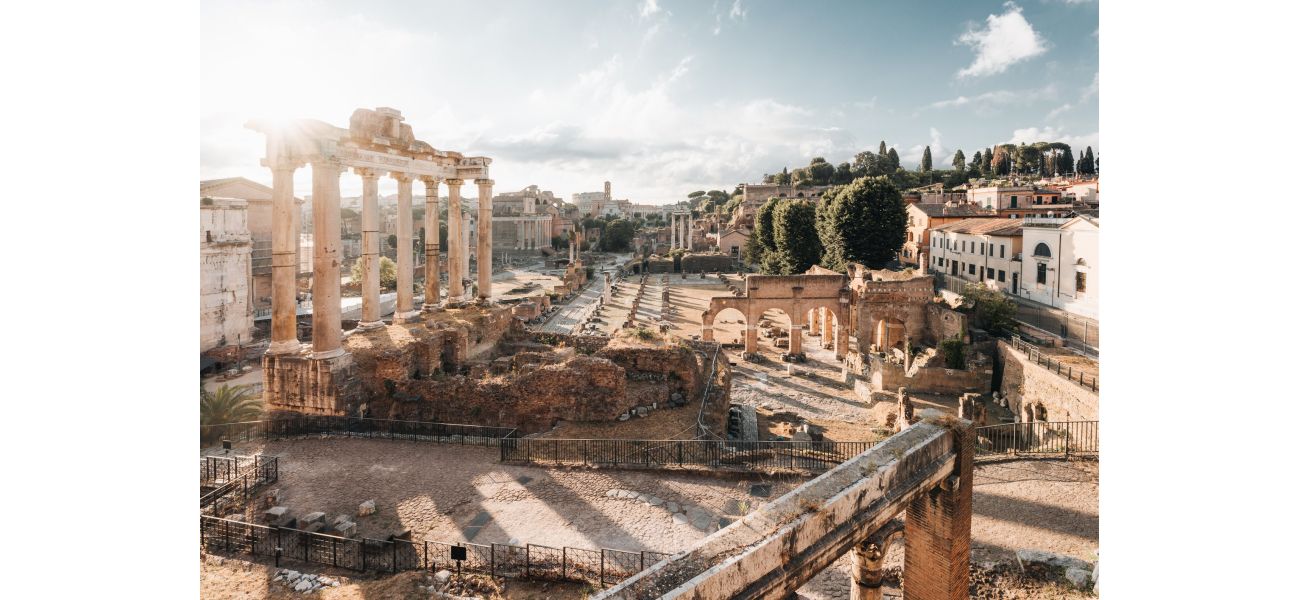Did you know that a city in the UK, other than Bath, was once ruled by the Romans?
Prepare to be amazed.
October 6th 2024.

Can you believe it? Rome, the iconic center of the ancient Roman Empire, was not always the main hub of power for this mighty civilization. In fact, for a period of time, that honor went to the lesser-known city of Carlisle in north west England, just a stone's throw away from the Scottish border. It may be hard to imagine now, but this rainy Cumbrian city was once the seat of one of the greatest empires in the world.
Thanks to the hard work of archaeologists, who have been digging up the local cricket ground for the past six years, the truth about Carlisle's past is finally being uncovered. Among the ruins, they have discovered the remains of an Imperial Bath House, believed to have been built for the Roman emperor Septimius Severus during his stay in the city around the third century AD. It is said that wherever the emperor resided, that place became the center of the empire.
This bath house is a remarkable find, as it is thought to be the largest building ever discovered along Hadrian's Wall, a structure that once spanned from Cumbria to Newcastle. Despite its age of almost 2,000 years, the site has yielded 34 tiles bearing the letters "IMP," the signature of the Roman Imperial court. This suggests that the bath house was either built for or on the orders of Emperor Severus himself.
The team of archaeologists, led by the renowned historian and presenter Professor Alice Roberts, has reason to believe that Severus was in Carlisle shortly before his death in 211 CE, based on an ancient text called Historia Augusta. But that's not all – there are two other key clues that support this theory. The first is the discovery of two "monumental" sculpted heads, larger than life-size, which would have adorned the rooftop of the bath house. The second is the finding of a regal purple dye, further evidence that this was a place fit for an emperor.
But the surprises don't stop there. Many of the most remarkable artifacts were found in an unexpected place – the drains. Among the treasures found were a striking purple mineral, likely used for dyeing clothes, and dozens of precious gemstones. This serves as further proof that Carlisle was indeed home to the emperor, as only Roman rulers were allowed to wear purple.
The bath house itself is a marvel of engineering, with elaborate underfloor heating that would have provided a luxurious experience for its visitors. And the fact that Carlisle is over 1,500 miles away from Rome only adds to the significance of this discovery. It is truly a testament to the far-reaching power of the Roman Empire.
The team also uncovered an inscription dedicated to Julia Domna, the mother of Emperor Alexander Severus, one of Septimius Severus's successors. It is clear that this was a place of great importance and prestige for the Roman rulers.
Professor Roberts, who will present the findings on BBC2 tonight, expressed her excitement about the unexpected discoveries at the site. She also highlighted the unique opportunity to connect archaeology with a specific moment in history – the time when Severus and his entourage were in Carlisle, attempting to conquer the nearby Caledonia.
But despite their efforts, the Roman Empire's hold on this northern frontier would ultimately fail. As archaeologist Frank Giecco from Wardell Armstrong Archaeology puts it, "the north of England would have been the center of the Roman Empire." And thanks to the diligent work of this team, we are able to catch a glimpse of this lesser-known chapter in history and the fascinating city of Carlisle.
Thanks to the hard work of archaeologists, who have been digging up the local cricket ground for the past six years, the truth about Carlisle's past is finally being uncovered. Among the ruins, they have discovered the remains of an Imperial Bath House, believed to have been built for the Roman emperor Septimius Severus during his stay in the city around the third century AD. It is said that wherever the emperor resided, that place became the center of the empire.
This bath house is a remarkable find, as it is thought to be the largest building ever discovered along Hadrian's Wall, a structure that once spanned from Cumbria to Newcastle. Despite its age of almost 2,000 years, the site has yielded 34 tiles bearing the letters "IMP," the signature of the Roman Imperial court. This suggests that the bath house was either built for or on the orders of Emperor Severus himself.
The team of archaeologists, led by the renowned historian and presenter Professor Alice Roberts, has reason to believe that Severus was in Carlisle shortly before his death in 211 CE, based on an ancient text called Historia Augusta. But that's not all – there are two other key clues that support this theory. The first is the discovery of two "monumental" sculpted heads, larger than life-size, which would have adorned the rooftop of the bath house. The second is the finding of a regal purple dye, further evidence that this was a place fit for an emperor.
But the surprises don't stop there. Many of the most remarkable artifacts were found in an unexpected place – the drains. Among the treasures found were a striking purple mineral, likely used for dyeing clothes, and dozens of precious gemstones. This serves as further proof that Carlisle was indeed home to the emperor, as only Roman rulers were allowed to wear purple.
The bath house itself is a marvel of engineering, with elaborate underfloor heating that would have provided a luxurious experience for its visitors. And the fact that Carlisle is over 1,500 miles away from Rome only adds to the significance of this discovery. It is truly a testament to the far-reaching power of the Roman Empire.
The team also uncovered an inscription dedicated to Julia Domna, the mother of Emperor Alexander Severus, one of Septimius Severus's successors. It is clear that this was a place of great importance and prestige for the Roman rulers.
Professor Roberts, who will present the findings on BBC2 tonight, expressed her excitement about the unexpected discoveries at the site. She also highlighted the unique opportunity to connect archaeology with a specific moment in history – the time when Severus and his entourage were in Carlisle, attempting to conquer the nearby Caledonia.
But despite their efforts, the Roman Empire's hold on this northern frontier would ultimately fail. As archaeologist Frank Giecco from Wardell Armstrong Archaeology puts it, "the north of England would have been the center of the Roman Empire." And thanks to the diligent work of this team, we are able to catch a glimpse of this lesser-known chapter in history and the fascinating city of Carlisle.
[This article has been trending online recently and has been generated with AI. Your feed is customized.]
[Generative AI is experimental.]
0
0
Submit Comment





